15% off £40
Our joints, bones, & muscles at different ages
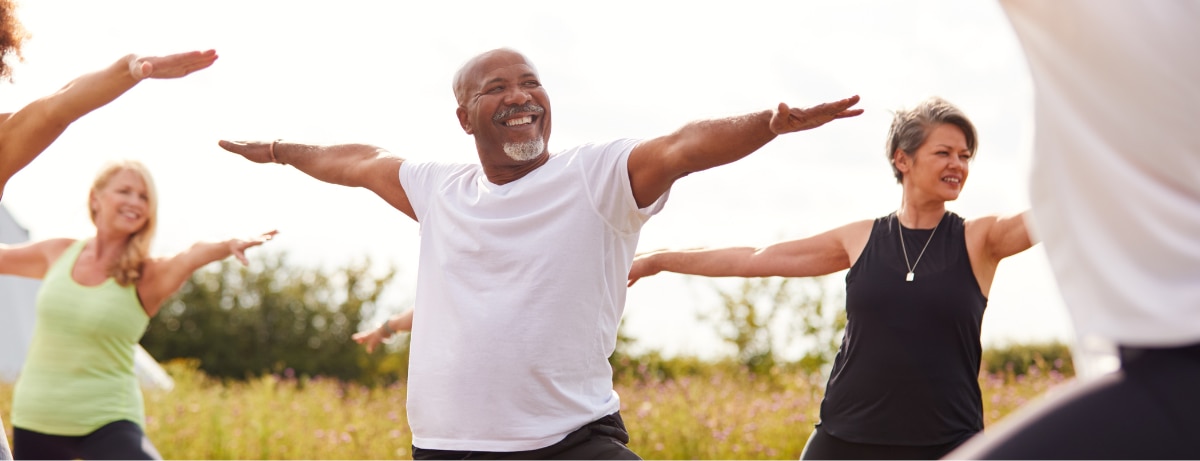
You might only think about your joints, bones, and muscles when an ache pops up. But you use them all your life, so it’s worth taking care of them early!
There are some changes that take place as you get older – but it’s not all about age. Your activity levels and everyday habits can affect your joint, bone, and muscle health at any time.
So, what exactly happens? We’ll go through some of the natural changes that can happen over time, as well as looking at ways to keep your body at its best, no matter your age.
Skip to:
What are joints, bones, & muscles & what do they do?
- Joints are where two bones meet. They allow them to move in certain ways; think the hinge of your knee or the round ball and socket of a shoulder.
- Bones provide structure to the body. They keep us upright and can protect some of our organs, too.
- Muscles relax and contract. They push and pull your bones and other body parts, allowing them to move.
How can we keep them in good shape?
How can we keep them in good shape?
You might associate poor joint, bone, and muscle health with older age – but it’s never too early to start looking after your body.
Keeping your joints flexible and well-supported helps to minimise aches and pains. Bones need to stay strong and dense to best support the rest of the body. And muscles that are strong and flexible will help you move more easily and feel stronger.
Whatever your age, there are small habits you can build to minimise your 'wear and tear' and keep your body healthy.
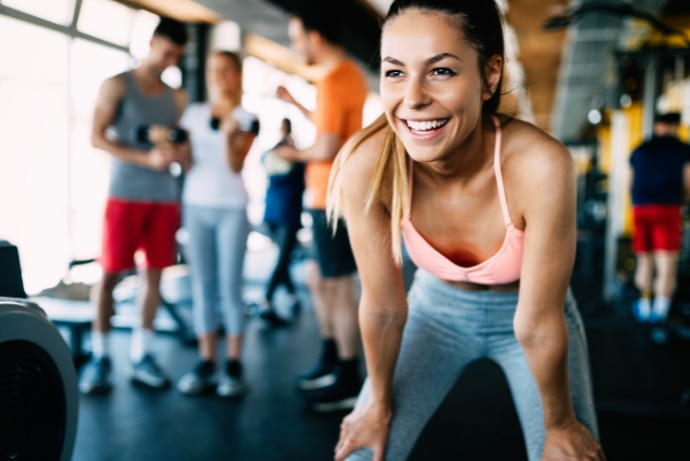

-
Diet
Protein
Protein is the superstar when it comes to muscle health. We need it for growing, repairing, and maintaining our whole body – but especially our muscles.1
It’s recommended to get about 0.75g protein per kilogram of your body weight each day. So, for example, someone weighing 75kg would need 56g daily.1
The best way to get protein is through your diet: meat and fish, beans, eggs, and pulses are all good sources.2
And we’re not short of protein shakes, bars, and powders to choose from to deliver some extra. If you struggle to get protein through the foods you normally eat, a protein supplement might be helpful.
But where do you start? Our Senior Nutritionist, Alex Glover, shares his expertise:
“There are two main types of protein supplement, plant-based or animal-derived. For most people there will be no discernible difference between the two, aside from perhaps consuming slightly more of the plant-based version to make up for the slightly lower essential amino acid levels.
The best types for supporting muscle building are proteins like whey, casein, and soy as these contain high levels of essential amino acids.
Brown rice and pea proteins are also good options - but these are ones that you may want to consume slightly more of per serving to match the quality of whey, casein, and soy (due to their slightly lower amino acid content).”
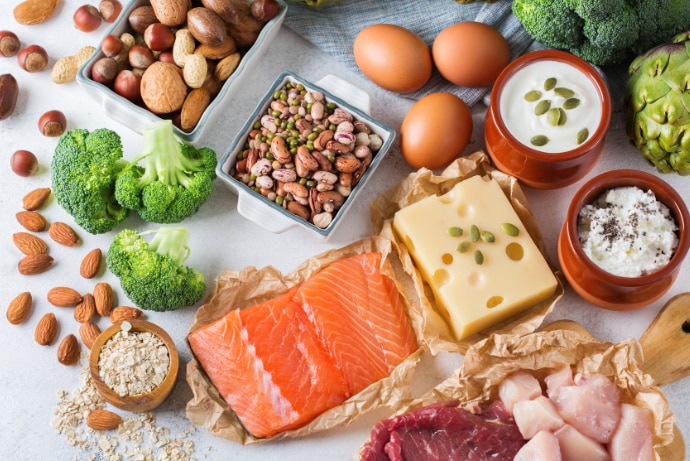

Calcium
You might already know calcium’s reputation for supporting strong, healthy bones! Adults need 700mg of calcium a day, found in foods like dairy products, leafy green veg, and fortified plant milks and bread.3
But you also need vitamin D to absorb the calcium.3 Vitamin D deficiency can result in bone deformities in children, and bone pain (caused by a condition called osteomalacia) in adults.4
- Hydration
Maybe it’s a long-forgotten New Year’s resolution...but drinking enough water can offer more than shiny skin and a fresh mind.
The outer surfaces of bones (known as cortical or compact bone) are about 25% water, so staying hydrated is pretty important.5
One study on women found that those who had had an osteoporosis-related fracture showed a significantly lower bone tissue water content than those without. While further research may be needed, the research strongly suggested that water content could potentially determine risk of fractures.5
It’s thought that 70-80% of your joint cartilage, and about 75% of your muscles, are made of water.6,7
When you’re well hydrated, your synovial fluid (the liquid that surrounds your joints and bones) cushions the joints and helps to prevent friction in the cartilage, allowing smooth and painless motion.6
If you’re not drinking enough water, your joints will be less lubricated by the synovial fluid and may contribute to joint pain.6
And muscles need water to function well, too! Dehydration can lead to muscle wasting, as well as difficulty contracting (tightening) them.7
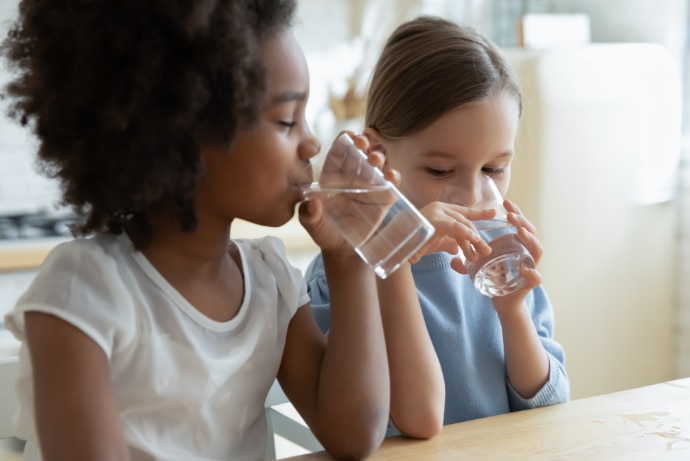

- Stretching and mobility
Regular movement is another crucial part of keeping your body healthy. The more you stretch your muscles, the more flexible they’ll stay.
Being sedentary for too long can cause stiffness in your joints and may reduce your mobility.
Getting out and about is important, no matter your age or how long you can stay active for.
Are you a 'deskerciser', a 'daytime stroller', or something else? Find out what kind of activity is best for you in our full guide to fitting small movements into your day.
How does age affect our joints, bones, & muscles?
While conditions affecting your bones and mobility (like osteoporosis and osteoarthritis) tend to increase with age, age shouldn’t determine how healthy you are!
There are plenty of older people with strong muscles and good mobility, and plenty of younger people who might experience problems.
Genetics, lifestyle, and many other factors can play into your likelihood of maintaining healthy joints, bones, and muscles. It’s best to look at your daily activity and areas you find particularly easy or difficult when it comes to moving your body.
That said, most people’s joints, bones, and muscles naturally change in certain ways over time...
In childhood
In childhood
You’re born with about 300 bones - almost 100 more than you end up with as an adult! Don’t worry, they don’t go anywhere; some just fuse together as you grow.8
Unlike adults, a child’s bones can grow. You might think of bone health as something for older people to worry about, but childhood is actually crucial in determining your skeletal health for life.9
The bones grow using growth plates, softer plates of bone that add length and width.


They eventually harden, but these softer bones – plus kids’ tendency to run and jump around - make fractures pretty common.10 About 1 in 3 children break a bone.11
Children need to use their muscles, too, for them to grow stronger. Young children are still learning to use each of their muscles, and their fine and gross motor skills are still developing.
The NHS suggests children do at least 60 minutes of moderate or vigorous activity every day (like walking, cycling, or PE lessons), as well as staying active throughout the day with a variety of types and intensities of movement.12
In adulthood
In adulthood
It’s thought that your bone and muscle strength increases throughout childhood, then peaks in early adulthood.13
You acquire up to 90% of peak bone mass by this time, usually by age 18 in girls and 20 in boys.13
Many people find that this is the peak of their musculoskeletal health, since they’ve acquired strength and mobility, but are usually at a lower risk of 'wear and tear' and the associated complications.
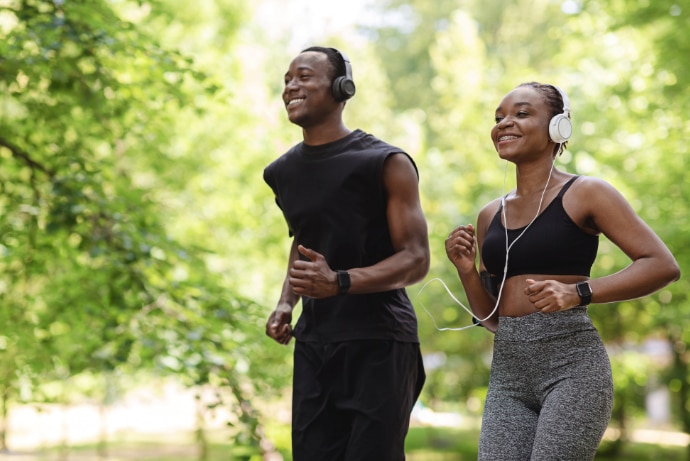

Younger adults tend to be more active, too, due to a combination of their generally good health and a usually busy lifestyle. This keeps muscles strong and reduces the likelihood of stiff joints.
However, everyone’s health and lifestyle is different, and anyone can experience conditions like osteoporosis and osteoarthritis. So, there isn’t necessarily a connection between joint, bone, and muscle health and age.
Older adults
After the peak in young adulthood, your bone and muscle strength generally begins to decline as you get older.14
Your joints and bones have been used for decades, and there’s some natural wear and tear. Synovial fluid decreases with age, meaning that there’s:
- less cushioning: leading to stiffer joints and bones that are more vulnerable to impact
- less lubrication between the joints and the cartilage. This may cause the cartilage to wear down, causing pain and reduced mobility (osteoarthritis)
According to NICE, osteoarthritis affects about 10% of men and 18% of women over 60 worldwide.15


Menopause
Menopause can also significantly affect your joints and bones. This is mainly due to hormonal fluctuations:16
- oestrogen is responsible for youthful, elastic skin and body tissues. It helps to reduce inflammation in the body, promote hydration, and regulates new bone growth.
- progesterone can improve mood and increase pain threshold levels.
- testosterone helps turn fat into muscle and supports and increases bone density.
All of these hormones decrease during and after menopause. Menopause significantly increases your likelihood of conditions like osteoporosis and osteoarthritis.17,18
Many people going through the menopause experience aches and pains in their joints and can lose as much as 20% of their bone mass during this time.17
Age can affect your muscular health, too. Muscle mass decreases approximately 3-8% each decade and declines even faster after age 60.19 Connective tissue (like muscles and ligaments) tend to shorten and harden, leading to some stiffness and reduced mobility.20
This natural, age-related loss of muscle mass and strength is called sarcopenia.
Sarcopenia can also increase your risk of falls and injuries, meaning you may be at greater risk of disability.19
How does lifestyle affect our joints, bones, & muscles?
How does lifestyle affect our joints, bones, & muscles?
While many of these changes are inevitable, or enhanced by factors outside of our control (like genetics and sex), keeping your joints, bones, and muscles healthy can help keep you comfortable and active for as long as possible.
You can make changes at any age, but early prevention is the most important. Changes like: 21
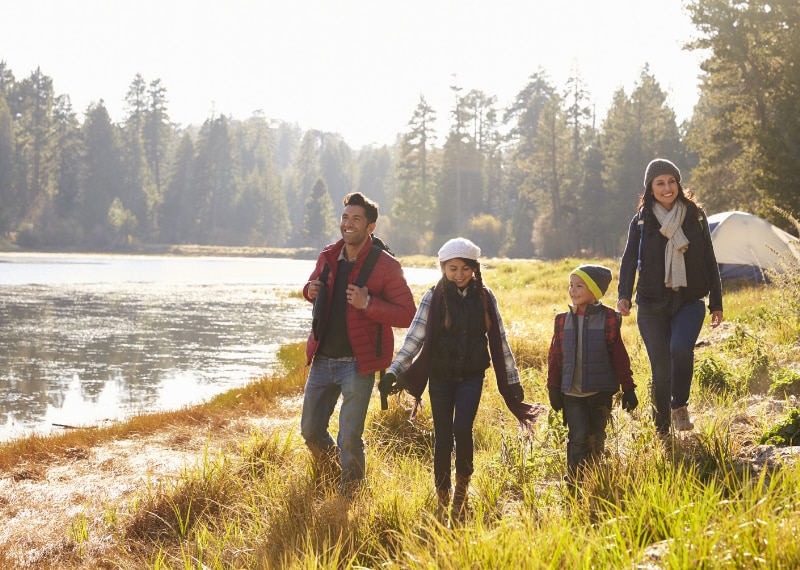

- getting at least 30 minutes of moderate aerobic exercise (like jogging, brisk walking, or cycling) 5 times per week
- doing muscle-strengthening activities (like lifting weights, hill walking, or yoga) at least twice a week 22
- following a balanced diet: getting all the nutrients you need can help keep your energy levels high and your joints, bones, and muscles strong. Maintaining a healthy weight is also one of the most significant ways to reduce pressure on your bones and keep them strong and dense.
- staying hydrated: water makes up a significant portion of your joints, bones, and muscles.
- not smoking: Smoking is associated with a higher risk of osteoporosis.21
- limiting your alcohol intake: the NHS recommends drinking no more than 14 units of alcohol per week.23
Can all keep your joints, bones, and muscles in their best condition.
Which exercises work best for joints, bones, & muscles?
All kinds of movement are important to keep your heart and musculoskeletal system healthy. But you might find that certain exercises work best for you.
Again, age isn’t the be-all and end-all. Your lifestyle and overall health are the best indicators of the changes you can make. Check our top tips on increasing your activity based on what kind of “mover” you are.
However, the NHS suggests that muscle- and bone-strengthening activities have different outcomes at different ages:14
- 18-24 years: maximising bone and muscle gains
- 40-50 years: maintaining strength and slowing the natural decline
- over 65 years: preserving strength and maintaining independence
So it’s always worth understanding how they’ll impact you and your goals.
Cardiovascular exercise
Cardiovascular exercise
Also known as cardio or aerobic exercise, this is the kind of movement that gets your heart pumping. Think running, HIIT training, dancing, or climbing the stairs.
As the name suggests, regular cardio exercise is important for your heart health.24 Because it involves movement from large muscle groups like your arms and legs, it’s also a great way to strengthen your muscles and help stay mobile.
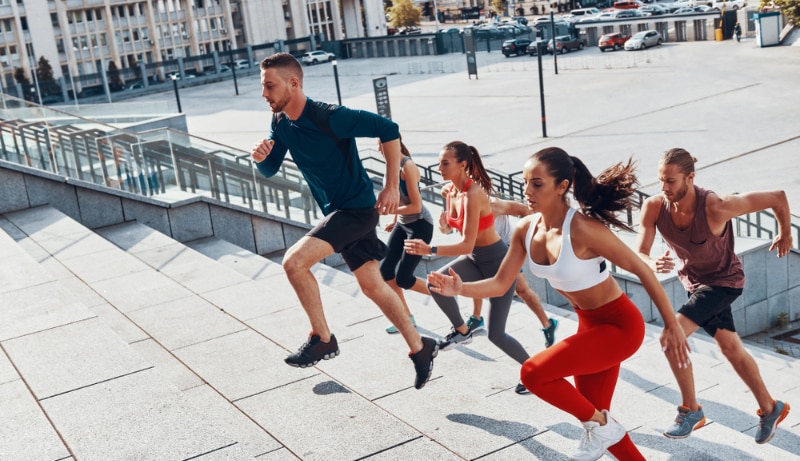

Strength exercise
Strength exercise
This is exercise that focuses on making you stronger.
When you do strength (resistance) exercises, the tendons pull on bones and make the bones stronger. 21 It also helps increase strength, power, and endurance in your muscles.22
Strength training might include lifting weights, walking up hills or stairs, doing yoga, or cycling.
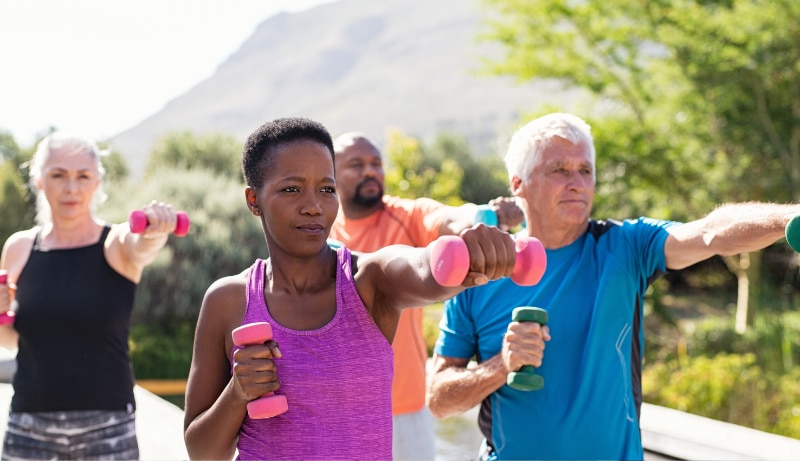

Load-bearing exercise
Load-bearing exercise
Load-bearing (or weight-bearing) exercises are activities where your feet and legs bear the weight of your body. These can include things like walking, running, and badminton. Load-bearing exercises can help to keep your bones strong by stimulating the growth of new bone tissue. They can also help to strengthen your muscles and ligaments.21
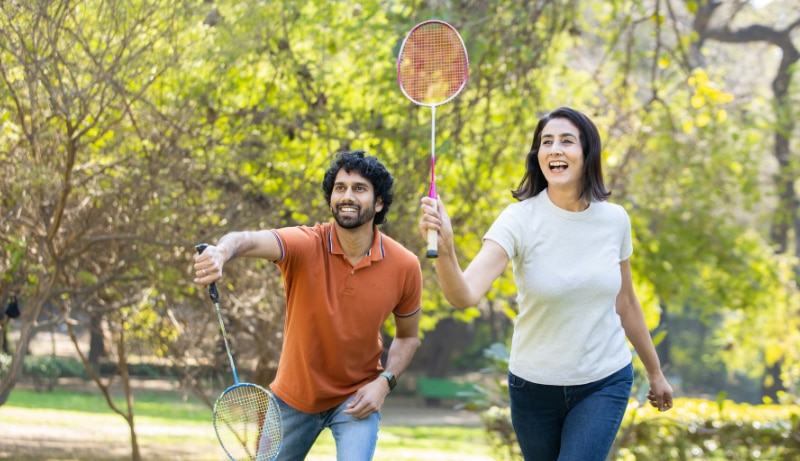

Which is best for me?
For most people, a combination of different types of exercise is best.
If you struggle with joint pain, it’s still a good idea to keep moving if you can. Choose low-impact exercises that put less pressure on your joints, like gentle walking, cycling, or swimming.
As well as strengthening your bones and muscles, focusing on your strength, balance, and flexibility may help you feel steadier on your feet and help reduce your risk of dangerous falls.
However, if you have a pre-existing condition like osteoporosis or arthritis, you might need to ask your doctor about the exercises that are safest for you.
Last updated: 24 March 2023
The advice in this article is for information only and should not replace medical care. Please check with your GP or healthcare professional before trying any supplements, treatments or remedies. Food supplements must not be used as a substitute for a varied and balanced diet and a healthy lifestyle.
Before taking any supplements or minerals, it’s best to make sure you’re getting all the nutrients through your diet first.
Food supplements must not be used as a substitute for a varied and balanced diet and a healthy lifestyle.
- https://www.nutrition.org.uk/healthy-sustainable-diets/protein/?level=Health%20professional
- https://www.nhs.uk/live-well/eat-well/how-to-eat-a-balanced-diet/eating-a-balanced-diet/
- https://www.nhs.uk/live-well/bone-health/food-for-strong-bones/
- https://www.nhs.uk/conditions/vitamins-and-minerals/vitamin-d/
- https://www.sciencedirect.com/science/article/pii/S2352187221004186?via%3Dihub
- https://orthopedicassociates.org/dehydration-and-joint-pain-how-your-hydration-is-affecting-joint-health/
- https://www.ncbi.nlm.nih.gov/pmc/articles/PMC6723611/
- https://askabiologist.asu.edu/bone-anatomy
- https://www.bones.nih.gov/health-info/bone/bone-health/juvenile
- https://kidshealth.org/en/parents/growth-plates.html
- https://www.sciencedaily.com/releases/2014/01/140107170602.htm
- https://www.nhs.uk/live-well/exercise/exercise-guidelines/physical-activity-guidelines-children-and-young-people/
- https://assets.publishing.service.gov.uk/government/uploads/system/uploads/attachment_data/file/949958/CYP_MSBS_Review__1_.pdf
- https://assets.publishing.service.gov.uk/government/uploads/system/uploads/attachment_data/file/721874/MBSBA_evidence_review.pdf
- https://cks.nice.org.uk/topics/osteoarthritis/background-information/prevalence/
- https://www.nhsemployers.org/system/files/2022-03/MSK_Menopause%20Leaflet.pdf
- https://www.ncbi.nlm.nih.gov/pmc/articles/PMC5643776/
- https://www.ncbi.nlm.nih.gov/pmc/articles/PMC6332715/
- https://www.ncbi.nlm.nih.gov/pmc/articles/PMC2804956/
- https://my.clevelandclinic.org/podcasts/health-essentials/dealing-with-common-aches-and-pains-as-we-age-with-dr-donald-ford
- https://westessexccg.nhs.uk/news-and-publications/publications/patient-information-materials/patient-information-booklets/2342-nhs-healthy-habits-spreads-v2/file
- https://www.nhs.uk/live-well/exercise/strength-and-flexibility-exercises/how-to-improve-strength-flexibility/
- https://www.nhs.uk/Live-well/alcohol-advice/tips-on-cutting-down-alcohol/
- https://www.bhf.org.uk/informationsupport/heart-matters-magazine/activity/exercises-heart-health













